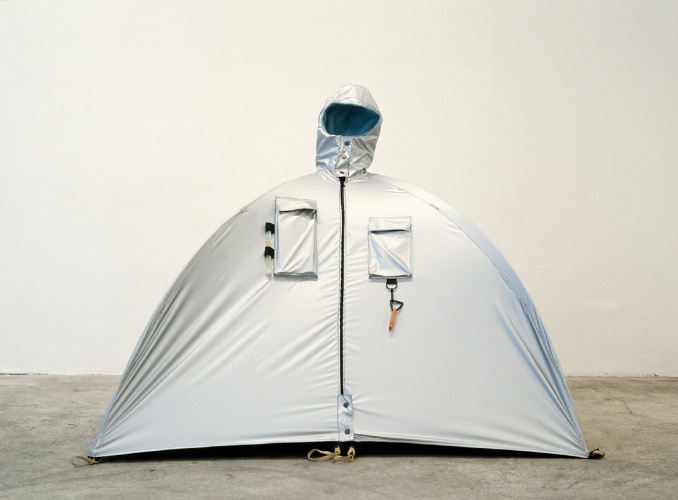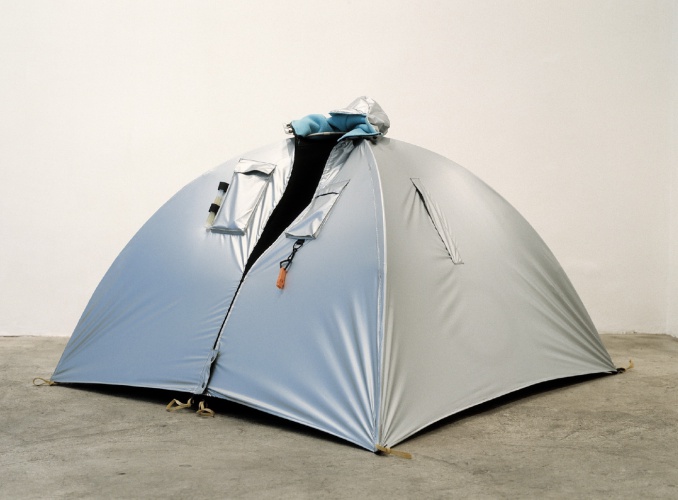Refuge Wear - Habitent
Date:
1992 - 1993
Ref:
0001
Materials:
Aluminium coated polyamide, polar fleece, telescopic aluminium poles, whistle, lantern, compass
Dimensions:
125x125x125cm (on plinth 130x130x10cm)
Catalogued:
pp27,37-38 Refuge Wear, Editions Jean Michel Place Paris; p38 Body Architecture, Verlag Silke Schreiber Germany; p42 Lucy Orta, Phaidon Press UK
Exhibition history:
1993 Galerie Anne de Villepoix, Paris; 1993 Cité de Refuge, Paris; 1997 Creux de l’Enfer Thiers, France; 2003 Lothringer 13 Munich, Germany; 2006 Chateau d'Avignon, France; 2007 Neue Kunst Halle St Gallen, Switzerland; 2008 Triennale Milan, Italy; Madi
Courtesy:
Collection of the Artists
For Lucy Orta, to speak of clothes is to speak of a consciousness of nudity, an awareness of the self. Clothes are not external attributes or strangers to the nature of the wearer; they express his or her essential and fundamental reality. Her Refuge Wear openly manifests man’s procedures of space definition, that is to say, how he produces his spatial condition. In this way, as underlined by Daniel Sibony, "to inhabit a space is to assimilate it to a body". The body is a building, and society too has a spatial morphology.
The Habitent, being a necessary element of an individual’s need for a minimum personal space, allows the wearer to isolate himself from the world and create a place of reflection and meditation; a closed, four-dimensional universe. It is similar to a mountain refuge, that is to say a temporary shelter providing a basic comfort where he can stop off before continuing on his way. Refuge Wear can help him rebuild an inner strength and, like any house, allows him to plant his axis mundi. The artist developed the Refuge Wear series in conjunction with certain homeless people whose paths she had followed over a number of years. The aim of the Refuge Wear is to serve as objects of meditation, made more poignant as some of the homeless have since succeeded in reintegrating into society. Unlike the committed political artists of the sixties, Lucy Orta prefers to confine herself to the world of art rather than seeking to denounce the 'deficit-generating' systems in society. She confronts reality face to face; a reality that she herself has summoned by acting on the very terrain of these actions. Jerome Sans

